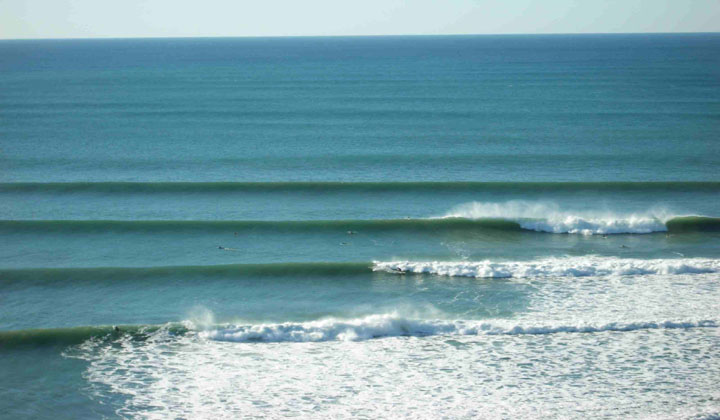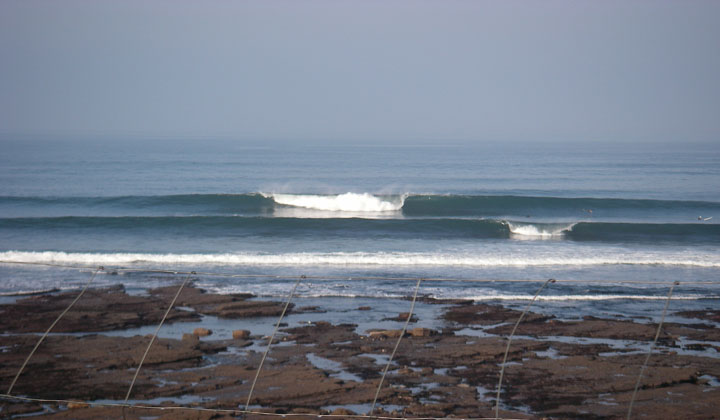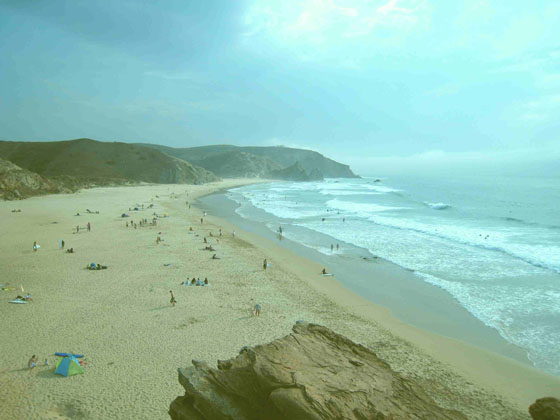- Point Break

Along with being a legendary 90s Keanu Reeves and Patrick Swayze film, a point break is where swell wraps around a cliff, rock or reef formation creating staggered (usually long) waves that are generally very consistent. Perfect examples of this would be Jeffreys Bay, South Africa, Raglan, New Zealand, and our very own Riberia D’Ilhas in Ericeria, Portugal. As point breaks are created by large land or reef formations, they tend to create some of the most consistent waves as you know when and where a wave is going to form and start breaking.
- Reef Break

No one knows how many there are of these in the world as the changing of a tide or season creates and destroys whether a reef break works. The expression ‘reef break’ covers both an actual coral reef that causes a wave to be forced up out of the ocean, as well as rock bottom breaks. Along with being incredibly beautiful, reef breaks create clean, normally nicely shaped waves, and will be consistently the same formation depending on the swell direction.
- Beach Break

It sounds like a cheesy name for a holiday, but beach breaks are one of the best breaks to learn to surf in. The waves found at a beach break are created by the sand of the beach on the ocean floor, so even if you touch the seabed, the sand is soft (unlike sharp reef or rock). Beach breaks are changeable with the tides and seasons just like reef breaks, so depending on the season some spots will work, whereas others may have disappeared only to come back the next season. The changing waves are formed as the sand shifts around, so new peaks and waves can form all the time.
